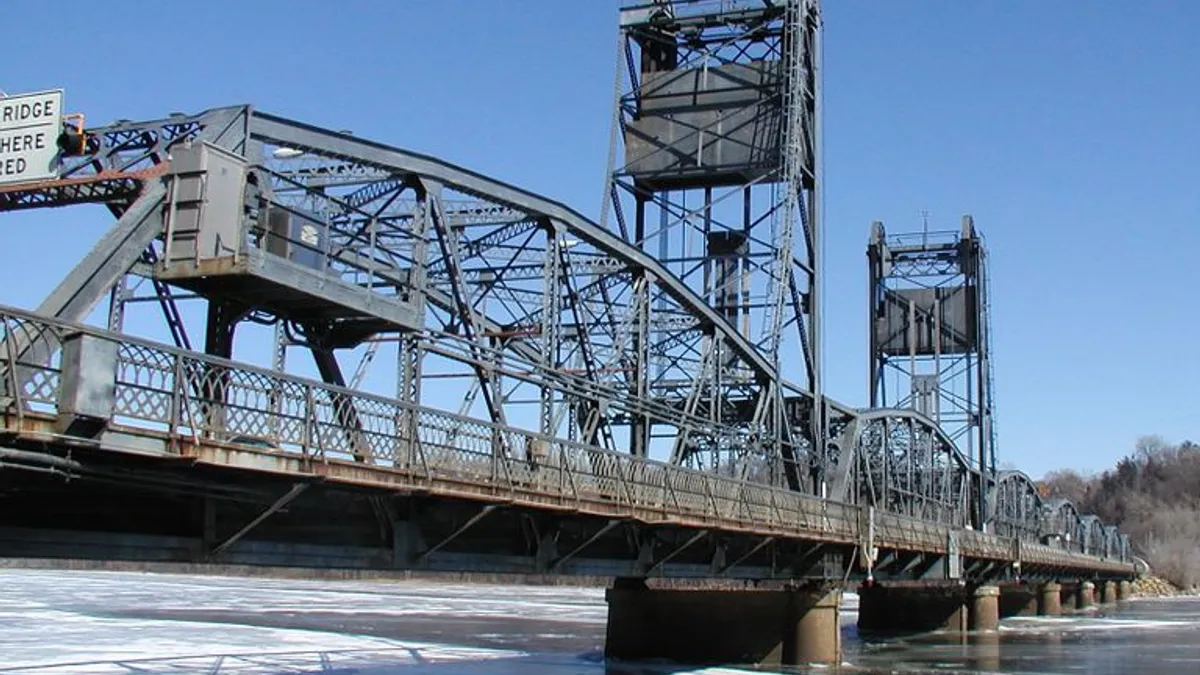Dive Brief:
- The Minnesota Department of Transportation is studying vibration data from the Interstate 35 St. Anthony Falls Bridge to create infrastructure monitoring and early warning structural failure alert systems.
- More than 500 smart bridge sensors have been collecting vibrational data since 2008, offering computational modeling for how the concrete structure bends and shifts from the effects of traffic, wind and temperature fluctuations.
- Project researchers have developed methods for detecting minute structural changes from changes in vibrational signature data while screening out false-positives from background noise associated with non-structural sources.
Dive Insight:
Vibration frequencies in infrastructure are often most acute in bridge spans and can be exacerbated by both traffic and wind, as was the case in the 1940 collapse of the Tacoma Narrows Bridge. Minnesota's I-35 smart bridge employs accelerometer sensors similar to the ones deployed at the Massachusetts Institute of Technology's 21-story Green Building, where researchers are likewise developing computational models for analyzing noise transmission and vibration signature data to measure building damage or structural stress.
If one day integrated with self-healing building materials, future infrastructure could ostensibly diagnose and repair structural-related damage to increase longevity and prevent catastrophic failures.
On the other side of the vibration spectrum, Virginia Tech researchers recently completed work on a portable mass tuning vibrational damper, greatly downsizing the hardware needed to reduce structural vibrations in bridges and buildings by up to 75 percent. At 2-feet-high, and 15-inch-wide, the damper improves on the 1,000 square-foot, multiton devices commonly used for mass damper tuning.














